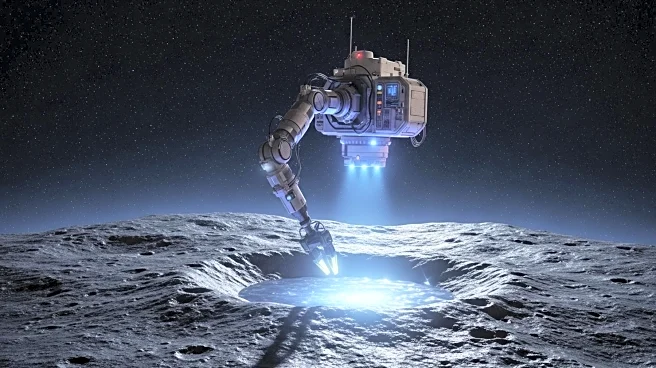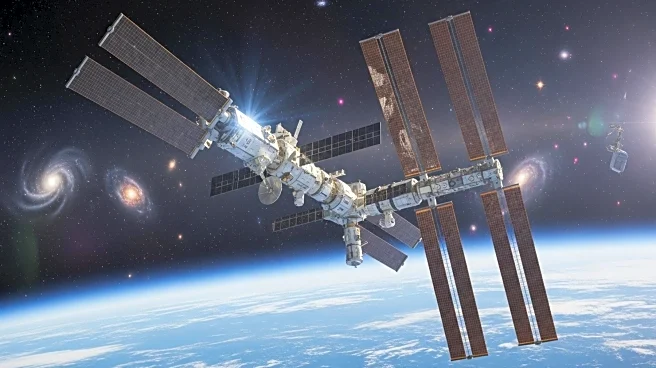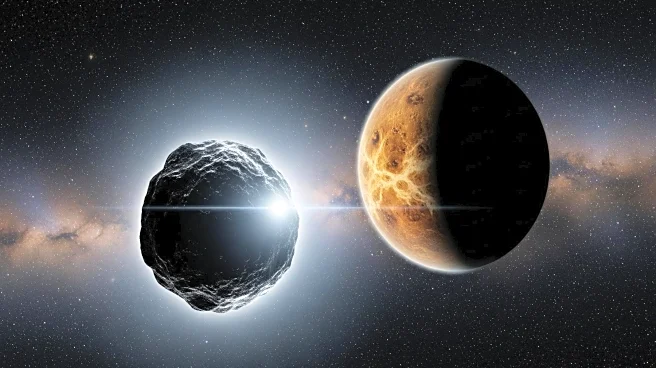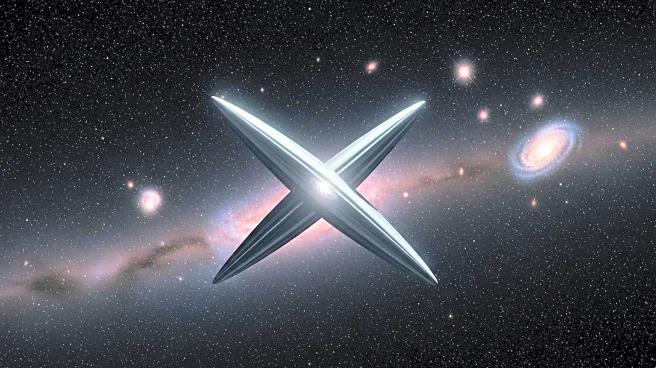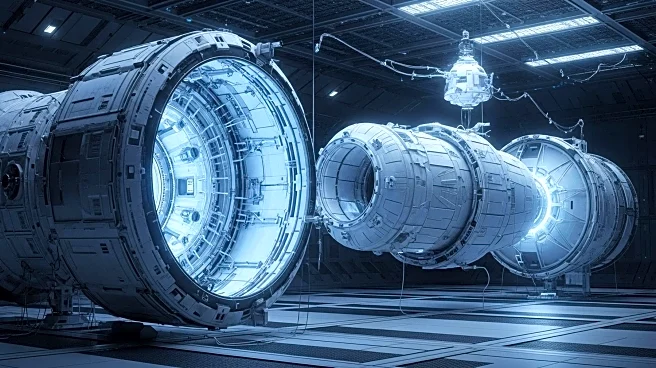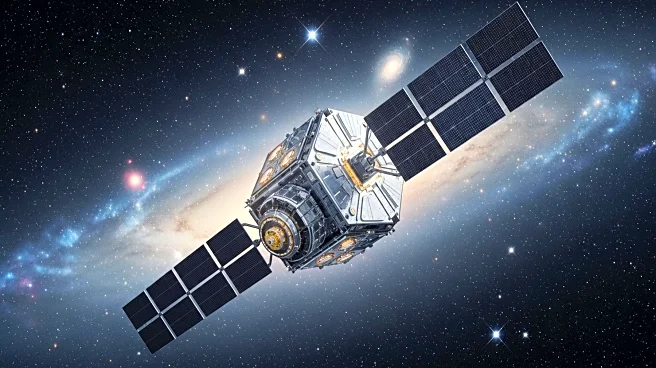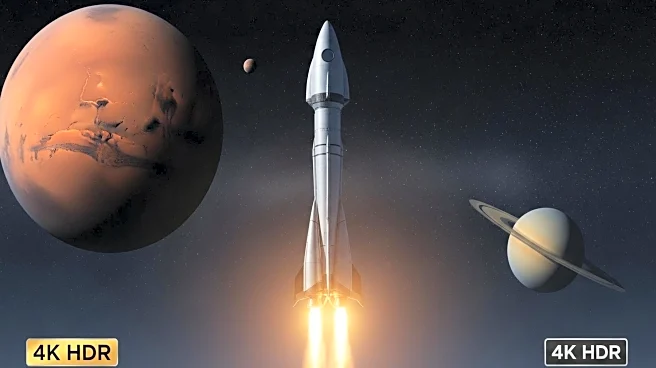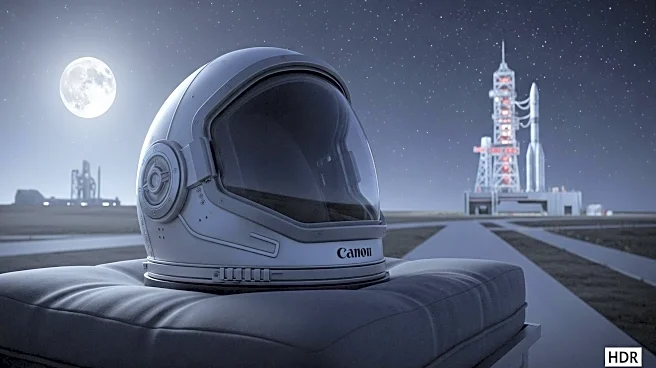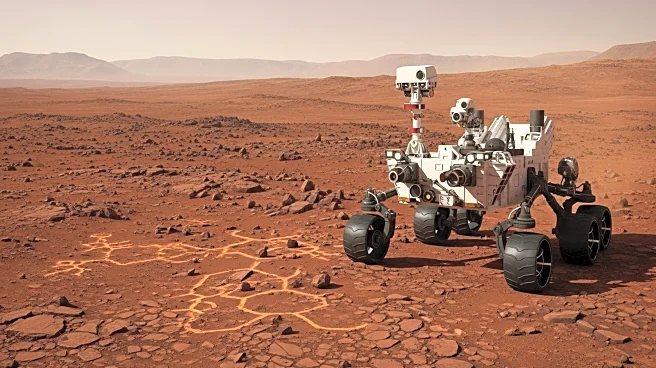What is the story about?
What's Happening?
A recent study published in Acta Astronautica explores the use of optical mining techniques to extract water and volatiles from carbonaceous asteroids. The research focuses on simulants named Nectar A and Nectar B, demonstrating how concentrated solar energy can induce thermal spalling, a process where materials fracture due to high thermal gradients. This method aims to efficiently extract resources from asteroids, which are considered vital for future space exploration and industry. The study utilized a vacuum chamber to simulate space conditions, employing a high-powered laser system to test the mining process on asteroid simulants.
Why It's Important?
The development of efficient asteroid mining techniques could significantly impact the future of space exploration and industry. By enabling the extraction of water and other resources from asteroids, these methods could support long-duration human missions and contribute to the establishment of a sustainable space economy. The ability to mine asteroids for resources could reduce the need for costly resupply missions from Earth, making space exploration more feasible and economically viable. This research highlights the potential for advanced optical control and adaptive beam shaping to optimize resource extraction in space.
What's Next?
Future research will likely focus on refining the optical mining techniques to improve efficiency and scalability. This could involve further testing with different mineral compositions and beam parameters to optimize the process. Additionally, the development of in-space mining systems that incorporate advanced optical control and adaptive beam shaping will be crucial for practical implementation. As the space industry continues to grow, collaboration between researchers, space agencies, and private companies will be essential to advance these technologies and explore their commercial applications.
AI Generated Content
Do you find this article useful?
